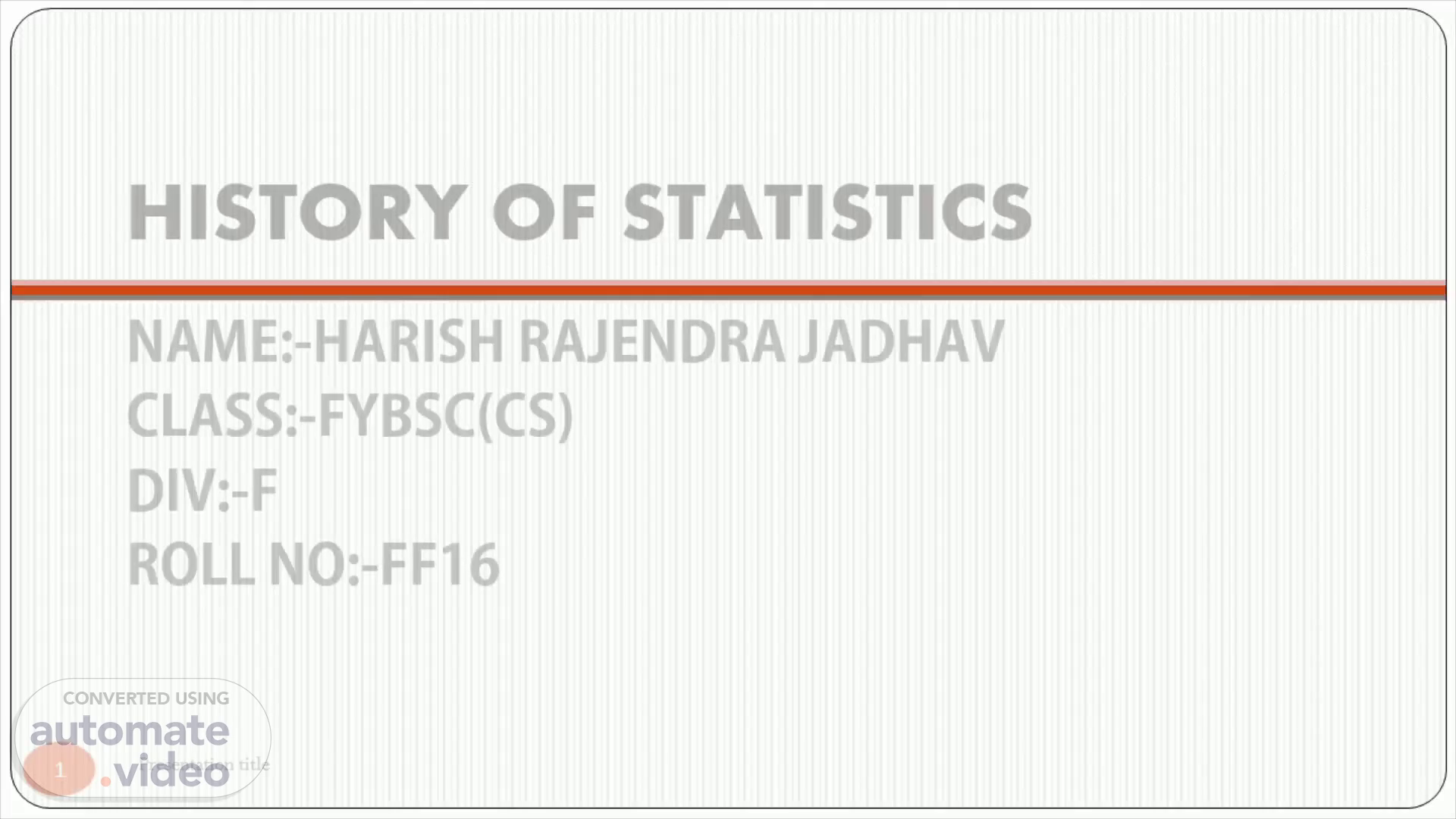
HISTORY OF STATISTICS
Scene 1 (0s)
[Audio] HISTORY OF STATISTICS NAME:-HARISH RAJENDRA JADHAV CLASS:-FYBSC(CS) DIV:-F ROLL NO:-FF16 Presentation title.
Scene 2 (15s)
[Audio] Introduction Statistics is the study of the collection, analysis, interpretation, presentation, and organization of data. In other words, it is a mathematical discipline to collect, summarize data. Also, we can say that statistics is a branch of applied mathematics. There are three tyes of statistics MEAN MEDIAN MODE The discipline is useful in converting random data to understandable information and aids in strategic business decision making. The scope of Statistics is very immense, the application of statistics goes into diverse fields such as solving social problems, industrial and scientific problems There are five charcteristics (a) Statistics are aggregate of facts (b) Statistics must be numerically expressed. (c) Statistics are collected for a pre-defined purpose (d) Statistics should be collected in a systematic manner. (e) Statistics are placed in relation to each other. Presentation title.
Scene 3 (1m 21s)
[Audio] What is stastics Data is a collection of facts, such as numbers, words, measurements, observations etc.. Representation of Data There are different ways to represent data such as through graphs, charts or tables. The general representation of statistical data are: Bar Graph Pie Chart Line Graph Pictograph Histogram Frequency Distribution There are two main data types statistics Descriptive Statistics: It summarizes the data from the sample using indexes Inferential Statistics: It concludes from the data which are subjected to the random variation.
Scene 4 (2m 3s)
[Audio] Uses Only by collecting, organizing and statistical historical data, and comparing and comparing the total population of each historical period, can we discover the trends and laws of population development. Only through accurate calculation can we accurately measure the growth of the population. By using the techniques of time series analysis which are based on statistical methods, the businessman can predict the effect of a large number of variables with a fair degree of accuracy. This type of information helps businessmen in formulating suitable policies statistics provide the information to educate how things work. They're used to conduct research, evaluate outcomes, develop critical thinking, and make informed decisions..
Scene 5 (2m 50s)
[Audio] . Presentation title. 5. ES AND IMP STATSTICS OF' Irnportance for Adrninistrators or adrninistration. Irnportance for businessrnan or industrialist in the field of business, industry or agriculture. Irnportance in econornics. Irnportance for politicians. Irnportance for social reforrner. Innportance in the field of science and research. Irnportance for banking. Inmportance in the field of education..
Scene 6 (3m 7s)
[Audio] Scope It presents the facts in numerical figures. For example, recording the sales of various products in a company. It helps in forecasting. For example, stock market results, sales, GDP It studies relationship between two or more phenomena It helps in formulation of policies It provides techniques for making decisions under uncertainty..
Scene 7 (3m 34s)
[Audio] . Presentation title. 7. LIMITATIONS OF STATISTICS 1. 2. 3. 6. 7. 8. Study or nurnerical facts only. Study of aggregates only. Not the only ruethod. Hornogeneity of data. Results are true only 011 an average. Can be used only by experts. Misuse of Statistics is possible. Only rneans and not a solution..
Scene 8 (3m 52s)
[Audio] THANK YOU!!. THANK YOU!!. Presentation title.